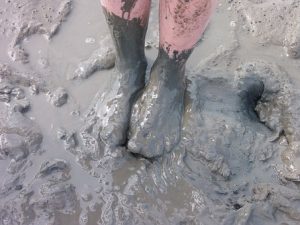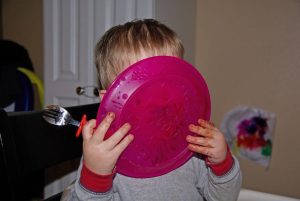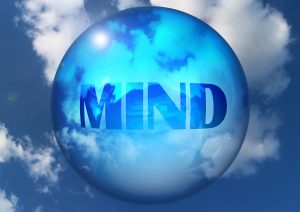Mindfulness is consciously paying attention to what is currently happening in the outside world and within. Just for a short while. It is a choice you make to train yourself to check in more often and be more available to events, interactions, and even emotions as they happen.
Background
We humans spend a great deal of our time in what we might call the world’s first virtual reality — our minds. We imagine, replay, ruminate, daydream and get involved in all kinds of thought strings, while barely noticing what is going on in the actual world. On top of this, the fast pace of modern life brings feelings of pressure, obligation, and stress to get countless things done on an ever shortening timeline, preventing us from feeling at ease or being happy. Instead we feel stressed.
Our physiological response to stress is pretty much the same whether we are defending ourselves from physical dangers, such as being threatened, or “dangers” of incessant pressure and demands. Cortisol streams through the body bringing bursts of energy and strength to fend off danger. This is an excellent response to sudden danger, but not for prolonged dangers or those brought on by our thinking. Levels of circulating cortisol bring muscle clenching that we experience as tension and tightness. Remaining in a state of tightness and defensiveness is exhausting and leads to feeling tired, strained, and depleted. It can also disrupt sleep, impair thinking, lower immune function, and elevate blood pressure.
So we have two ongoing patterns: a general tendency to get lost in thoughts and be less engaged with what’s going on in the real world, and a tendency to feel chronic stress and strain from pressures and obligations that are piling up.
Numerous studies using experience sampling methods, in which subjects are signaled randomly throughout the day, reveal that people are thinking about something other than what they are doing at least half the time. Yet these studies, which also gather data on emotions, show that people are happiest when they are fully involved with what they are doing. (This is called being in flow.) Other studies, from both psychology and medicine, show that pausing for just short periods to connect with the here and now dramatically reduces feelings of stress, reduces cortisol, and increases physiological responses associated with calm positive feelings. These pauses are instances of mindfulness.
Mindfulness
Mindfulness practices date back thousands of years and are especially associated with Buddhist teachings. Mindfulness simply simply means being aware of what you are sensing and feeling in the present moment, without evaluating or judging it. It is being fully open, or available, to experience what is happening.
 This is how children regularly experience the world: aware, tuned into what is occurring and to sensations they are having. Think about how intensely children watch a bug crawling, watch their footprints appearing in sand or feel the squish and squeeze stuff. Think about how engaged they are playing, or slowly licking ice cream or letting something dissolve in their mouths. Children move through many other mental states as well — daydreaming, thinking, solving problems, worrying. Many on the same kinds of things adults think about. But children naturally spend more time being mindful.
This is how children regularly experience the world: aware, tuned into what is occurring and to sensations they are having. Think about how intensely children watch a bug crawling, watch their footprints appearing in sand or feel the squish and squeeze stuff. Think about how engaged they are playing, or slowly licking ice cream or letting something dissolve in their mouths. Children move through many other mental states as well — daydreaming, thinking, solving problems, worrying. Many on the same kinds of things adults think about. But children naturally spend more time being mindful.
Obviously there are times for thinking. Our thinking and problem-solving are a huge part of who we are as humans and how we’ve accomplished and invented all we have.
There are even times for mindlessness. Relying on habits or acting on auto pilot is actually very useful. Good habits preserve effective ways of doing something. They come from our previously having attended to a task of some sort and learning how to accomplish it. Tying shoes, driving a car, and typing on a keyboard are all very useful habits. They free up our mental space for other things. We wouldn’t be nearly as competent without such habits. So mindless functioning actually has it place in life.
In contrast, drifting through days without really getting involved with what is happening is living without really being engaged in life and without really connecting to others. It is unsatisfying. Daily life lacks richness. Promising yourself that you’ll enjoy life as soon as the next project ends or the next task is checked off is a promise you never keep. When you’re not experiencing life much, you don’t really taste food, you don’t see and smell nature as you pass through it, you don’t even really feel the fond touch of someone stroking you. Everything is diminished. Life is a fraction of what it can be if you were really there.
Mindfulness counteracts both stressful living and lack of engagement. It’s actually a natural state. Remember, you did it a lot as a child. We naturally open to it with just a small amount of guidance.
Modern Practices of Mindfulness
Several strands and traditions come together with the new millennial interest mindfulness. One is a booming interest in meditation as a way to counteract stress and experience greater happiness or well-being. Another comes from programs that target stress reduction.
During the 1980s, Jon Kabat-Zinn, now emeritus professor of medicine at the University of Massachusetts, developed an eight week course called Mindfulness-Based Stress Reduction (MBSR). The program helps lower high blood pressure and improves health in patients at risk for diseases associated with elevated pressure. Today, MBSR programs are offered through many hospitals as well as through other organizations. Research indicates that MBSR may decrease levels of cortisol, lesson some kinds of chronic pain, improve sleep, and lower risks of depression.
Studies of changes in individuals who meditate show similar reductions in cortisol as well as improved vagal tone (which means a healthy heart and breath rate), changes in the amygdala related to how stress is handled and several other positive measures. Both MBSR and meditation are associated with greater feelings of happiness and positivity, greater mental and physical flexibility and a higher subjective sense of general well-being.
How do you learn or practice mindfulness?
You can develop mindfulness in many ways.
- Enrolling in an MBSR program near you or taking a class in meditation are obvious options.
- Many colleges and universities offer (low-cost) meditation programs, as do other organizations.
- Many major meditation centers and universities have online offerings.
- You may want to explore websites for Insight Meditation centers near you.
- There are a variety of new apps, such as Headspace, that offer guided meditation.
- If you type meditation or mindfulness into your search engine you will find a surprising number of programs.
- You may want to look through the magazine, “Mindful” for support and ideas.
Insights For Parents includes mindfulness practices here as well as in some of its weekly Micro Practices

